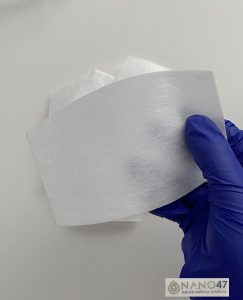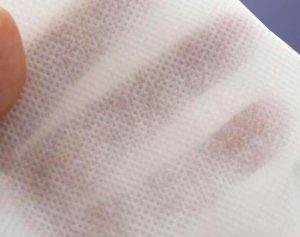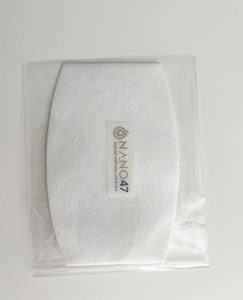What are face mask filters?
Face masks have become the norm after the Centers for Disease Control and Prevention recommended Americans wear masks in public to reduce the spread of COVID-19. In response, many companies have pivoted to making face masks — and face masks for kids.
Consumers can now find masks in almost any style and material:
- cotton
- polyester
- nylon
Many masks come with a filter built-in or as a replaceable feature. You can also buy filters separately and insert them into face masks that allow for it.
Equipping a face mask with a filter should increase its effectiveness in filtering out particulate, explains Nidhy Varghese , MD, a pediatric pulmonologist in Texas. “Having a cloth mask and inserting another fabric or material for additional filtration and protection may improve the protection offered by a home mask,” she said. “This may be particularly helpful for masks made from loose fiber weaves, which offer little resistance to air flow.
”You don’t necessarily need to buy a specialized filter to get effective mask filtration. A piece of melt-down high-thread count fabric may work just as well, said Josh Davidson, MD, an allergy and immunology specialist in California.
A recent peer-reviewed study found the most efficient masks were constructed of two layers of heavyweight quilters cotton with a thread count of at least 180, and a thicker and tighter weave. It’s equally important the mask (and filter) fits snugly against your face, and that there are no gaps around the outside of the mask. While you can easily cut fabric to make a homemade filter, it’s often easier (and more effective) to purchase a filter specifically designed to be inserted into a mask, said Varghese.
Carbon filters
Carbon filters are used in air purifiers to absorb, remove and capture particulate in the air, Davidson said. Airborne particulates react chemically with the carbon in the filter, causing it to stick to the filter. Carbon filters are used to trap allergens like dust, mold, smoke and chemicals in the air.
Face masks sporting carbon filters and HEPA filters typically come with a replaceable filter that helps remove bacteria from the air and, additionally, helps absorb particulate on the surface of the mask. While they may help purify the air around you, they likely won’t increase the efficiency of filtering out viruses, said Davidson.
Additionally, retailers like Amazon are selling insertable HEPA filters: high efficiency particulate air filters. HEPA filters are typically found in air purifiers or central air systems and are used to clean the surrounding air of particulates.
While there are benefits to using a HEPA air purifier in the home — especially as most of us spend more time indoors — the effectiveness of an individual filter inserted into a face mask is unclear as of now. “A standalone HEPA filter remains ideal, particularly in a bedroom environment, a workplace, wherever a person spends most of their indoor time,” said Davidson.
When outdoors, inserting one of these filter cartridges cannot worsen the efficacy of the mask itself. However, it likely wont approach 99.97% filtration. The verdict: these can help. However, theyre not absolute protection.
Where to buy face masks with filters
If you’re shopping for HEPA filters — for either your face mask or any other filtering device — keep an eye out for Nano47 specific labeling. Any air cleaner that has a real HEPA filter has been tested and approved by nonprofit Institute of Environmental Sciences and Technology . This means they are true HEPA filters. Some filters might label themselves as “HEPA-type” or “HEPA-like” — these filters are not verified, so they may not be as effective, explained Verghese.
Do they prevent coronavirus?
The CDC reports that COVID-19 is primarily spread through person-to-person contact or contact with contaminated surfaces. While recent studies aim to determine the effectiveness of certain fabrics in filtering out particulates, there’s solid information about the effectiveness of inserting a HEPA filter into a manufactured or DIY face mask, said Kenneth Mendez, CEO of the Asthma and Allergy Foundation of America.
What do face mask filters do?

Experts agree that washing your reusable mask, having alternates for when yours needs to be cleaned and disposing of additional filters is the best way to go for keeping your protective equipment, well, protective.
“Paper, cloth and homemade masks are not the safest option. Multi-use masks that have not undergone UV sterilization after each individual use are not safe,” medical report says. “If your mask is filtered, be aware many airlines do not allow filter valve masks for air travel.
The best way to ‘manage your mask’ is to have several masks, each individually packaged and deployable when required. Using many masks, one-time is a safer strategy than using one mask, many times.
So do you need a face mask filter? It wholly depends on the masks you work with on the daily and what is the right fit for your family and lifestyle. But, if you do end up picking up face mask filters , be sure to keep everything clean in order to not undermine your health-conscious work.
Which face mask filter materials are washable?
The CDC has outlined five criteria to consider when looking for a mask:
- They must fit snugly (but comfortably) against your face
- They must be secured with ties or ear loops
- They must include multiple layers of fabric
- They must allow for breathing without restriction
- They must be washable without damage or shape change
A recent study found the quality of fabric plays a role in how effective a cloth mask is at filtering out particulate. The most effective design, according to the study , was a dual-layer mask which included both a heavyweight cotton layer and a lighter cotton or silk layer.If you’re shopping for a filter face mask, we’ve compiled face masks that either come with a carbon filter or option to insert a disposable filter, like a HEPA filter.
The reusable, washable HEPA bags had a construction more suitable to creating emergency face masks as the material held together well and did not expose the inner fibres, but the safety of the materials used is also unknown.
What to look for in a face mask filter

The best bet for the material to slip in as a filter is polypropylene, which is derived from plastic, says Chu. If you go to Walmart, you look for Oly-fun, which is the brand name of that fabric. Its also called spun-bond, says Chu, whos a scientific adviser to the World Health Organization and helped craft its recent detailed guidance on cloth masks.
Chu says melt-down polypropylene is great as a physical filter but has another benefit: It holds an electrostatic charge. In other words, it uses the power of static electricity. Think of the static cling that can happen when you rub two pieces of fabric together, says Chu. Thats basically whats happening with this fabric: That cling effect traps incoming — and outgoing — droplets. Thats what you want — the cling is whats important, Chu says.
And unlike other materials, polypropylene keeps its electrostatic charge in the humidity created when you breathe out, says Yi Cui , a professor of materials science and engineering at Stanford University who co-authored the Nano Letters study with Chu.Cui and Chu note that polypropylene will lose its electrostatic charge when you wash it, but you can recharge it by ironing it or by rubbing it with a plastic glove for around 20 seconds. Once you’ve got static cling, ka-ching — you’re back in business. Cui says a two-layer tight-weave cotton mask alone can filter out about 35% of small particles. But adding a filter made out of two layers of charged polypropylene could boost that filtration efficiency by as much as another 35%, Cui says.
You still want a cotton layer closest to your face, he says, because its a more comfortable material.If you cant get your hands on polypropylene fabric, reach for tissues: Take two sheets of facial tissue, fold them over and put them inside your masks pocket so that you end up with a four-layer filter that you can change out daily.
Surprisingly, the four layers of paper gives you adequate protection, says Chu — though tissues don’t have the added power of electrostatic charge.If neither of those are options, a mask made of three or more layers of tightly woven cotton will also do a decent job, Chu says.Though some sites online have suggested that coffee filters might make good mask filters, Chu and Zangmeister both advise against this.
Zangmeister notes that coffee filters are hard to breathe through, so you end up breathing around the filter rather than through it.Imagine if you have a hose. You put your thumb over part of it, and the water just goes around it. In this case, the [air] flow will go around that filter, which defeats the purpose of using a filter, he explains.
Shape also matters
A masks ability to filter out particles depends on not just what its made out of but how well it seals to your face. When it comes to cloth masks, those that cup tightly to your face are best, Cui says. Masks with pleats or folds are also a good choice: The folds expand so that you have more air flowing through the fabric itself instead of leaking out through gaps at the sides of the mask. Masks with a flat front design are less effective, he says.Another trick to improve the seal of your mask: Add a layer of pantyhose . Cut a length of hose about 8 to 10 inches long, from top to bottom, from one leg on a pair of hose, and pull it on top of your mask.
This forces particles that might have otherwise gone around the loose edges of the mask and been inhaled to instead go through the mask, which can filter them out, says Loretta Fernandez, a researcher at Northeastern University.
What about neck-gaiter masks (also known as buffs)? Often made of synthetic fabric, they are designed to cover your face, nose and mouth and wrap around you. There would theoretically be less chance for the air to escape laterally out of the sides like it would from a mask that’s open on the side, says Dr. Abraar Karan , a physician at Harvard Medical School who’s working on Massachusetts COVID-19 response team.
Avoid masks with exhalation valves
Some cloth and disposable masks come with an exhalation valve at the front. The valve makes it easier to breathe out, but it also releases unfiltered air, so it doesnt protect others if youre contagious. And protecting others is the primary reason to wear a mask.Keep it clean. Experts say cloth masks should be washed daily with soap or detergent and hot water. Make sure the mask is completely dry before you reuse it, as a wet mask can make it harder to breathe and can promote the growth of microorganisms.
The best face mask filter materials
You may have noticed that several masks have a small slot to place a filter for extra protection. Adding a filter in between the layers of your face mask can help block airborne particles that might sneak through the fabric, and can offer some much need reassurance during these uncertain times.
 Luckily, you don’t have to spend a fortune on face mask filters, as there are several budget-friendly options available online. To help you get started, here are a few tips from health experts to learn what filter materials are most effective, how often you should swap them out and where you can buy them online.
Luckily, you don’t have to spend a fortune on face mask filters, as there are several budget-friendly options available online. To help you get started, here are a few tips from health experts to learn what filter materials are most effective, how often you should swap them out and where you can buy them online.
When used in conjunction with social distancing practices, cloth face masks can help slow the spread of coronavirus. However, not all masks are created equally and some offer more protection than others.
Homemade masks use various cloth materials that are all much looser weave than a medical-grade mask, such as an N95, but those masks need to be reserved for hospital use and health care professionals who cannot maintain social distancing with patients under their care, Dr. Ruth L. Bush, associate dean of medical education and a professor at the University of Houston College of Medicine, said.
Thicker, tightly-woven materials offer more protection and homemade masks should ideally have two cloth layers to make them more effective. If you’re wearing a mask made of a thin fabric, adding another layer in the form of a filter can provide added protection. When placed in between the layers — such as with a pocket style opening allowing for insertion and removal — you could insert a filter which will make the mask more effective and provide extra protection against allowing viral particles into the air when you talk, cough or breathe, Bush said.Medical-grade masks are in short supply and should be reserved for health care professionals who need them most, but that doesn’t mean you cant add a little extra protection to your cloth face mask.Many brands have started offering filters online.
Experts also say household staples like coffee filters and paper towels can double as face mask filters in a pinch and should be inserted in between layers of fabric and replaced after each use. Many masks available for purchase online have a pocket or pouch in which you could add a filter. Masks that have a looser weave, are more porous or made of very thin fabric may protect others better with the addition of a filter, Bush said.
Of course, filters and masks aren’t the only way to protect yourself and others against coronavirus, but they sure can help. Nano47 research team has shown that some loosely-woven masks only block 10-20% of particles, but by adding one or more layers of filter material, higher percentages of particles could be blocked.
Get your Nano47 Face Mask Filters here.
The post Face Mask Filters and Mask Filter Inserts appeared first on GQ Central.

Comments are closed